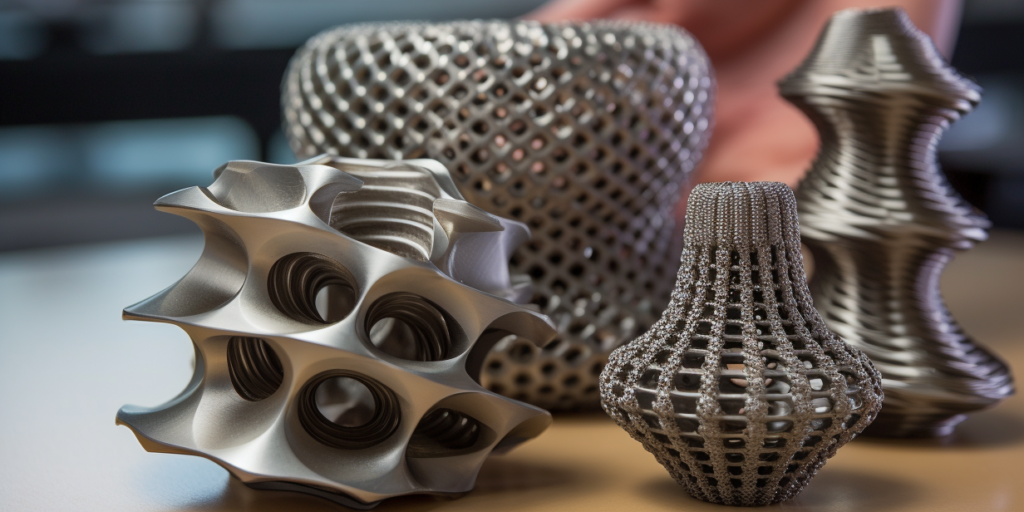
Clear communication between designers and fabricators is crucial in precision machining and manufacturing. One of the most common challenges in this process is specifying dimensional and geometrical tolerances accurately, especially when dealing with parts that require consistency across batches and suppliers. This is where ISO 2768 comes into play.
What is ISO 2768 Standard?
The ISO 2768 standard provides a unified system for applying general tolerances to machined parts. Rather than requiring detailed tolerances on every individual dimension in a technical drawing, ISO 2768 allows engineers to apply a standardized set of tolerances simply by referencing the standard on the drawing.
This not only saves time but also significantly reduces the likelihood of misinterpretation, particularly in global supply chains where parts are manufactured across different countries and teams. Used extensively in industries such as automotive, aerospace, and precision engineering, ISO 2768 is especially relevant to CNC machining, where even minor deviations can affect assembly, functionality, or lifespan.
By defining permissible variation limits in dimensions and geometry, ISO 2768 ensures compatibility between mating parts and contributes to the reliability and quality of finished products.
Background of ISO 2768
ISO 2768 was introduced to simplify engineering documentation and standardize tolerances for features that do not require specific limits.
It was first published by the International Organization for Standardization (ISO) to provide a consistent framework for general tolerances in mechanical drawings, especially when exact values are unnecessary or overly restrictive. Over time, it has become widely adopted in mechanical and CNC machining industries worldwide.
The ISO 2768 standard is organized into two complementary parts: ISO 2768-1 and ISO 2768-2, each covering distinct aspects of general tolerances. This structure allows engineers to apply standardized limits for both dimensions and geometry, streamlining the communication of manufacturing requirements.
ISO 2768-1: Tolerances for Linear and Angular Dimensions
ISO 2768-1 focuses on tolerances for dimensions such as lengths, widths, diameters, and angles. Instead of specifying individual tolerances for every measurement, this part lets designers assign one of four tolerance classes that define permissible deviations based on nominal size ranges. The four tolerance classes are:
- f (fine): Used for high-precision parts where tight dimensional control is essential, often found in assemblies requiring close fits or minimal variation.
- m (medium): The most commonly used class, suitable for general-purpose machining where moderate precision is acceptable and cost-efficiency is important.
- c (coarse): Appropriate for less critical features or components where larger dimensional variation will not impact performance or assembly.
- v (very coarse): Applied to non-functional or rough-machined surfaces where accuracy is not a priority, helping to reduce production time and cost.
These classes are referenced in a table format within the standard, which specifies allowable deviations based on the nominal dimension ranges—for example, tolerances for dimensions under 3 mm differ from those for dimensions over 400 mm.
Table 1: Linear Dimensions
This table specifies permissible deviations for linear dimensions such as lengths, widths, heights, and diameters, based on the nominal size range and selected tolerance class.
This table allows designers to select an appropriate tolerance class based on the required precision and manufacturing capabilities. For instance, choosing the ‘m’ (medium) class for a dimension of 50 mm would permit a deviation of ±0.3 mm.
| Permissible deviations in mm for ranges in nominal lengths | f (fine) | Tolerance class designation (description) | v (very coarse) | |
| m (medium) | c (coarse) | |||
| 0.5 up to 3 | ±0.05 | ±0.1 | ±0.2 | – |
| over 3 up to 6 | ±0.05 | ±0.1 | ±0.3 | ±0.5 |
| over 6 up to 30 | ±0.1 | ±0.2 | ±0.5 | ±1.0 |
| over 30 up to 120 | ±0.15 | ±0.3 | ±0.8 | ±1.5 |
| over 120 up to 400 | ±0.2 | ±0.5 | ±1.2 | ±2.5 |
| over 400 up to 1000 | ±0.3 | ±0.8 | ±2.0 | ±4.0 |
| over 1000 up to 2000 | ±0.5 | ±1.2 | ±3.0 | ±6.0 |
| over 2000 up to 4000 | – | ±2.0 | ±4.0 | ±8.0 |
Note: For nominal sizes below 0.5 mm, deviations should be specified adjacent to the relevant nominal size.
Table 2: External Radii and Chamfer Heights
This table defines permissible deviations for external radii and chamfer heights, which are critical for edge treatments and transitions.
| Permissible deviations in mm for ranges in nominal lengths | f (fine) | Tolerance class designation (description) | v (very coarse) | |
| m (medium) | c (coarse) | |||
| 0.5 up to 3 | ±0.2 | ±0.2 | ±0.4 | ±0.4 |
| over 3 up to 6 | ±0.5 | ±0.5 | ±1.0 | ±1.0 |
| over 6 | ±1.0 | ±1.0 | ±2.0 | ±2.0 |
These tolerances ensure that features like chamfers and radii meet functional and aesthetic requirements without the need for individually specified tolerances.
Table 3: Angular Dimensions
This table provides permissible deviations for angular dimensions, which are essential for features like chamfers, tapers, and angular cuts.
Angular tolerances are crucial for ensuring the correct orientation and fit of parts. Selecting the appropriate class based on the feature size and required precision helps maintain functional integrity.
| Permissible deviations in degrees and minutes for ranges in nominal lengths | f (fine) | Tolerance class designation (description) | v (very coarse) | |
| m (medium) | c (coarse) | |||
| up to 10 | ±1° | ±1° | ±1°30′ | ±3° |
| over 10 up to 50 | ±0°30′ | ±0°30′ | ±1° | ±2° |
| over 50 up to 120 | ±0°20′ | ±0°20′ | ±0°30′ | ±1° |
| over 120 up to 400 | ±0°10′ | ±0°10′ | ±0°15′ | ±0°30′ |
| over 400 | ±0°5′ | ±0°5′ | ±0°10′ | ±0°20′ |
Angular tolerances are crucial for ensuring the correct orientation and fit of parts. Selecting the appropriate class based on the feature size and required precision helps maintain functional integrity.
By applying ISO 2768-1, designers can streamline the specification process, reduce drawing complexity, and ensure consistent manufacturing outcomes across different production environments.
ISO 2768-2: Tolerances for Geometrical Features
While ISO 2768-1 addresses dimensional tolerances such as lengths, radii, and angles, ISO 2768-2 focuses on geometrical tolerances – the essential characteristics that define the shape, form, and orientation of a part. These include attributes like straightness, flatness, perpendicularity, symmetry, and run-out, which play a critical role in ensuring that parts assemble correctly and function reliably.
Geometrical features influence how parts interact with each other, especially in high-precision applications. Inadequate control over these aspects can lead to functional issues, increased wear, or even complete assembly failure.
To guide the application of geometrical tolerances, ISO 2768-2 defines three tolerance classes:
- H (tightest tolerance): Intended for parts that demand strict geometrical control, particularly in high-performance or high-speed applications.
- K (medium level): Offers a balance between precision and manufacturability, suitable for most general engineering applications.
- L (loosest tolerance): Used when form and position deviations have minimal or no effect on the part’s function, allowing for maximum manufacturing flexibility.
Each class is supported by tabulated limits in the standard, based on feature sizes and types. These help designers and manufacturers quickly determine acceptable levels of deviation without the need for customized geometric tolerances on every feature.
Together, ISO 2768 provides a robust framework for defining general tolerances, reducing drawing complexity, enhancing design clarity, and supporting efficient and consistent production practices across diverse manufacturing environments.
Table 1: Straightness and Flatness
This table defines the permissible deviations for straightness and flatness, which are critical for ensuring that surfaces and lines remain within acceptable limits of deviation. Straightness pertains to the allowable deviation of a line from its ideal straight form, while flatness relates to the allowable deviation of a surface from its ideal flat form.
| Ranges in nominal Tolerance class lengths in mm | Tolerance class | ||
| H | K | L | |
| Up to 10 | 0.02 | 0.05 | 0.1 |
| Over 10 up to 30 | 0.05 | 0.1 | 0.2 |
| Over 30 up to 100 | 0.1 | 0.2 | 0.4 |
| Over 100 up to 300 | 0.2 | 0.4 | 0.8 |
| Over 300 up to 1000 | 0.3 | 0.6 | 1.2 |
| Over 1000 up to 3000 | 0.4 | 0.8 | 1.6 |
These tolerances are essential for components that require precise mating surfaces or linear movement.
Table 2: Perpendicularity
This table specifies the allowable deviation from perfect perpendicularity between features. Perpendicularity is crucial in assemblies where components must fit together at right angles, such as in frames, housings, and mechanical joints. Maintaining appropriate perpendicularity ensures structural integrity and proper function.
| Ranges in nominal Tolerance class lengths in mm | Tolerance class | ||
| H | K | L | |
| Up to 100 | 0.2 | 0.4 | 0.6 |
| Over 100 up to 300 | 0.3 | 0.6 | 1.0 |
| Over 300 up to 1000 | 0.4 | 0.8 | 1.5 |
| Over 1000 up to 3000 | 0.5 | 0.8 | 2.0 |
Table 3: General Tolerances on Symmetry
This table outlines the permissible deviations for symmetry, ensuring that features are evenly distributed about a central axis or plane. Symmetry tolerances are vital in components where balance and uniformity are necessary, such as rotating parts or aesthetic elements.
| Ranges in nominal Tolerance class lengths in mm | Tolerance class | ||
| H | K | L | |
| Up to 100 | 0.5 | 0.6 | 0.6 |
| Over 100 up to 300 | 0.5 | 0.6 | 1.0 |
| Over 300 up to 1000 | 0.5 | 0.8 | 1.5 |
| Over 1000 up to 3000 | 0.5 | 1.0 | 2.0 |
Table 4: Circular Run-Out
This table specifies the allowable variation in circular run-out, which is the deviation of a surface as it rotates around a central axis. Controlling circular run-out is essential for components like shafts and disks, where excessive deviation can lead to imbalance, vibration, or premature wear.
| Tolerance Class | ||
| H | K | L |
| 0.1 | 0.2 | 0.5 |
Note: You can download the iso 2768 PDF here: General Tolerances DIN ISO 2768.PDF
Practical Application of ISO 2768
ISO 2768 serves as a foundational standard in mechanical design and manufacturing, offering a practical method for managing general tolerances without overburdening technical drawings.
Proper implementation ensures both design clarity and manufacturing efficiency, especially in high-volume or precision engineering contexts.
Implementing Tolerances in Design
The most effective way to apply ISO 2768 is by referencing it directly on technical drawings, thereby avoiding the need to define individual tolerances for every linear, angular, or geometric feature. Designers typically specify the standard in a title block or a general note, using a notation such as: “ISO 2768-mK”
This shorthand conveys two critical elements:
- “m” refers to the medium tolerance class for linear and angular dimensions (as per ISO 2768-1).
- “K” refers to the medium geometrical tolerance class (as per ISO 2768-2).
Depending on the precision required for a given project, other combinations may be used, such as ISO 2768-fH (fine linear tolerances, high-precision geometric tolerances) or ISO 2768-cL (coarse linear tolerances, low-precision geometric tolerances).
Reduction of Errors and Misinterpretations
ISO 2768 helps eliminate discrepancies between engineering design intent and shop floor interpretation. It ensures that machinists and quality control personnel understand the permissible variation limits for features not dimensioned individually, thus avoiding over- or under-interpretation.
This is particularly important in international production scenarios where manufacturers from different regions may interpret dimensional looseness differently if no standard is cited. A standardized approach guarantees consistency across suppliers and production runs.
Cost Savings
Over-dimensioning a part can lead to unnecessary precision machining, inspection time, and manufacturing cost. ISO 2768 allows designers to set realistic expectations by assigning appropriate tolerance classes based on the function and importance of each feature.
For instance, general mounting brackets may not require tight tolerances, and applying a coarse (c) or low (L) grade under ISO 2768 avoids overengineering. On the other hand, functional interfaces can be dimensioned specifically while relying on ISO 2768 for the rest, striking a balance between cost-efficiency and performance.
The use of ISO 2768 supports lean manufacturing principles by enabling smarter allocation of resources and clearer communication throughout the design-to-production lifecycle.
Other Tolerance Standards
In addition to ISO 2768, other widely adopted standards provide more specific control over part dimensions and geometric relationships.
- ISO 286 focuses on fits and tolerances for holes and shafts, offering detailed specifications for clearance, transition, and interference fits.
- Geometric Dimensioning and Tolerancing (GD&T), on the other hand, is a comprehensive symbolic language that conveys form, orientation, profile, and positional tolerances with greater precision than ISO 2768.
While ISO 2768 is suitable for general applications, GD&T is typically used in high-precision assemblies where detailed control is essential.
Conclusion
ISO 2768 plays a vital role in simplifying dimensioning practices, ensuring consistency and efficiency in machining and mechanical design. Designers and manufacturers are encouraged to adopt ISO 2768 to enhance communication, reduce production errors, and streamline the design-to-manufacturing process.





